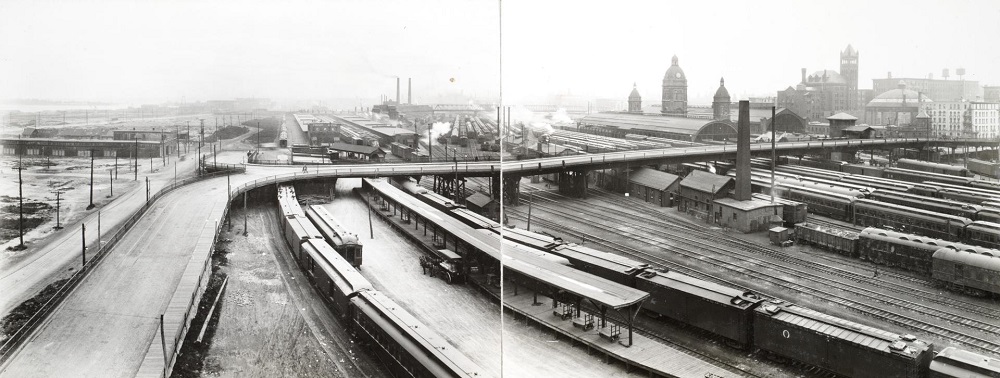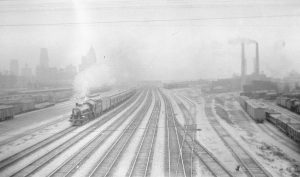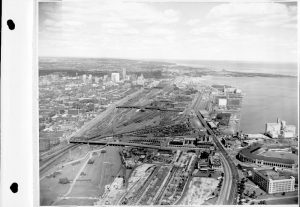Toronto: A Railway City

Toronto Harbour 1926, looking west from east of Bay Street, between waterfront & Front Street, showing York Street Bridge.
The history of Toronto’s railways is full of interesting stories. There are countless colourful personalities, big construction projects, and powerful politicians. There was also corruption and rivalries. This online project focuses not on the most famous of these stories, nor the big moments of Toronto’s railway history. We will look at the stories of ordinary people working in this industry. The railways could not be built without people, from the conductor to the engineer to those lesser-noticed people working trackside. There have been thousands of people working in this industry over the last 150 years.
170 Years on the Rails
On May 16, 1853, the first passenger train left Toronto. This train left from a wooden depot located close to where Union Station is today. At that time, the town was called York. It was a quiet town compared to the big city of Montreal. Over the next 100 years, the railways had a big impact on Toronto’s economy. It was transformed from a sleepy small town into a manufacturing centre. This happened, in part, because of the railways. Along with people, goods could be transported from Toronto to other parts of Ontario by rail. This helped the city grow immensely. By the 1960s, Toronto was the biggest city in Canada.

From the Spadina Ave. bridge, this view of the Canadian National Railway Spadina Ave. shops also shows a Canadian Pacific Railway train leaving Union Station in Toronto, June 1932.
As with many changes, railways were a mixed blessing for the people of Toronto. Railways brought many jobs to Toronto. You will learn about some of these jobs in this online project – jobs like engineers and safety officers. Railways made it easier to get around the city and province. You didn’t have to take a horse or ship to travel long distances, and you would travel much faster. However, the tracks were also an eyesore. Miles of track cut the city off from the shores of Lake Ontario. Railway companies owned the best real estate in town. They needed a lot of land for their buildings and tracks. The development of the railways along the harbour prevented people from using the lake for fun activities and from seeing the nice views.
Impact of the Railways
Toronto’s railway legacy is an important topic of debate today. Today, Toronto is planning to revitalise the waterfront. Many people do not know how the railways shaped and reshaped the shores of the lake. The railways created land, extending into the lake, to hold rail yards and railway buildings. The Toronto Railway Museum sits on land created for the Canadian Pacific’s John Street Roundhouse in the late 1800s.


